Most people, when they start doing a portrait, they're thinking about details right from the beginning, as if you can't get a brush small enough to make the painting. They're not thinking about how to simplify portrait painting.
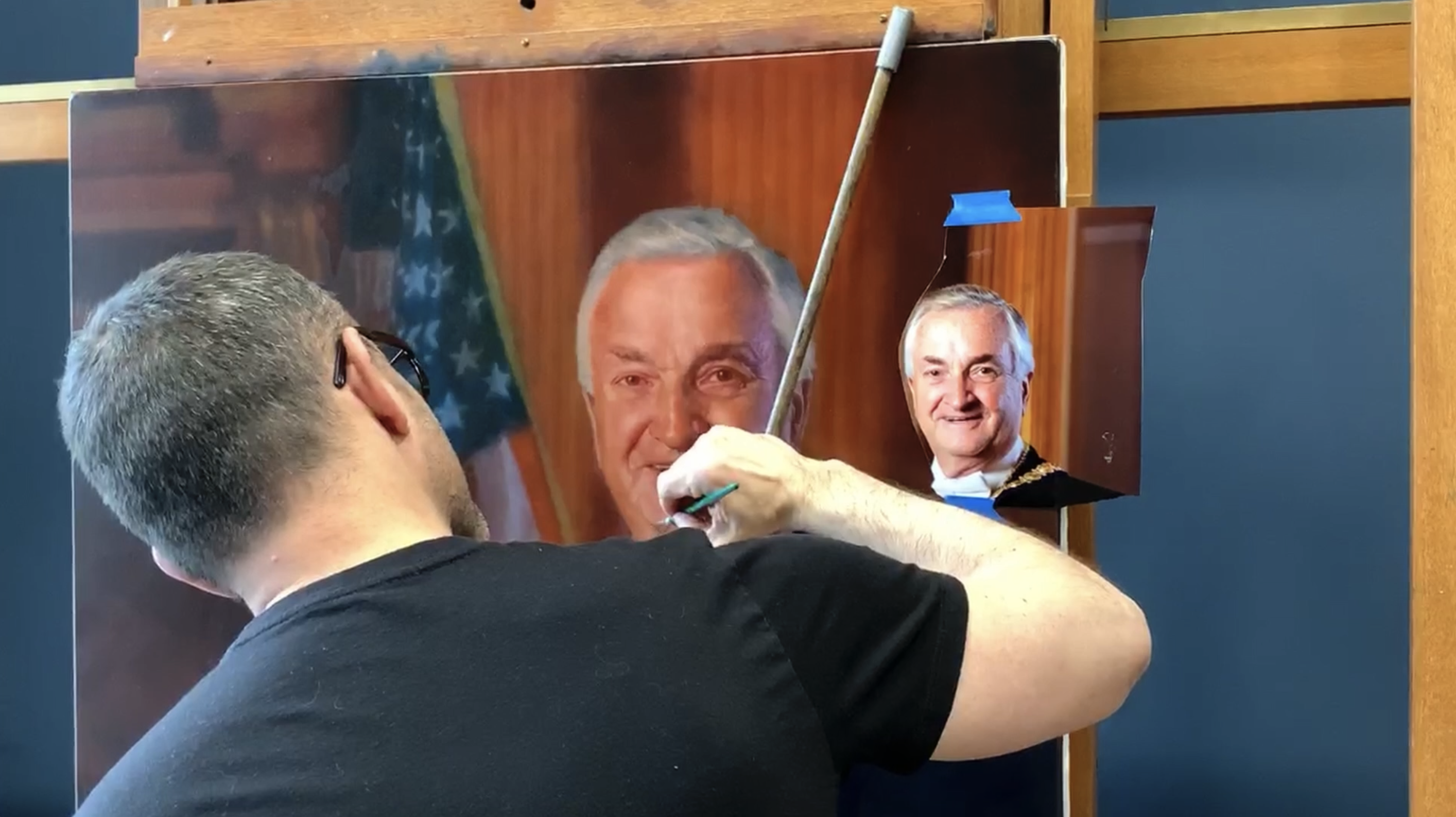
Evolve Founder Kevin Murphy working on a portrait painting of Grand Master Sardone.
The truth is, if you watch anyone who knows how to paint a portrait, they're taking out two-inch brushes to get it started. They're not working with these tiny little one hair brushes trying to paint the pores of the skin. They start with these overarching shapes.
How to Simplify Portrait Painting
Now, I want to show you just how irrelevant the details are compared to the structure.
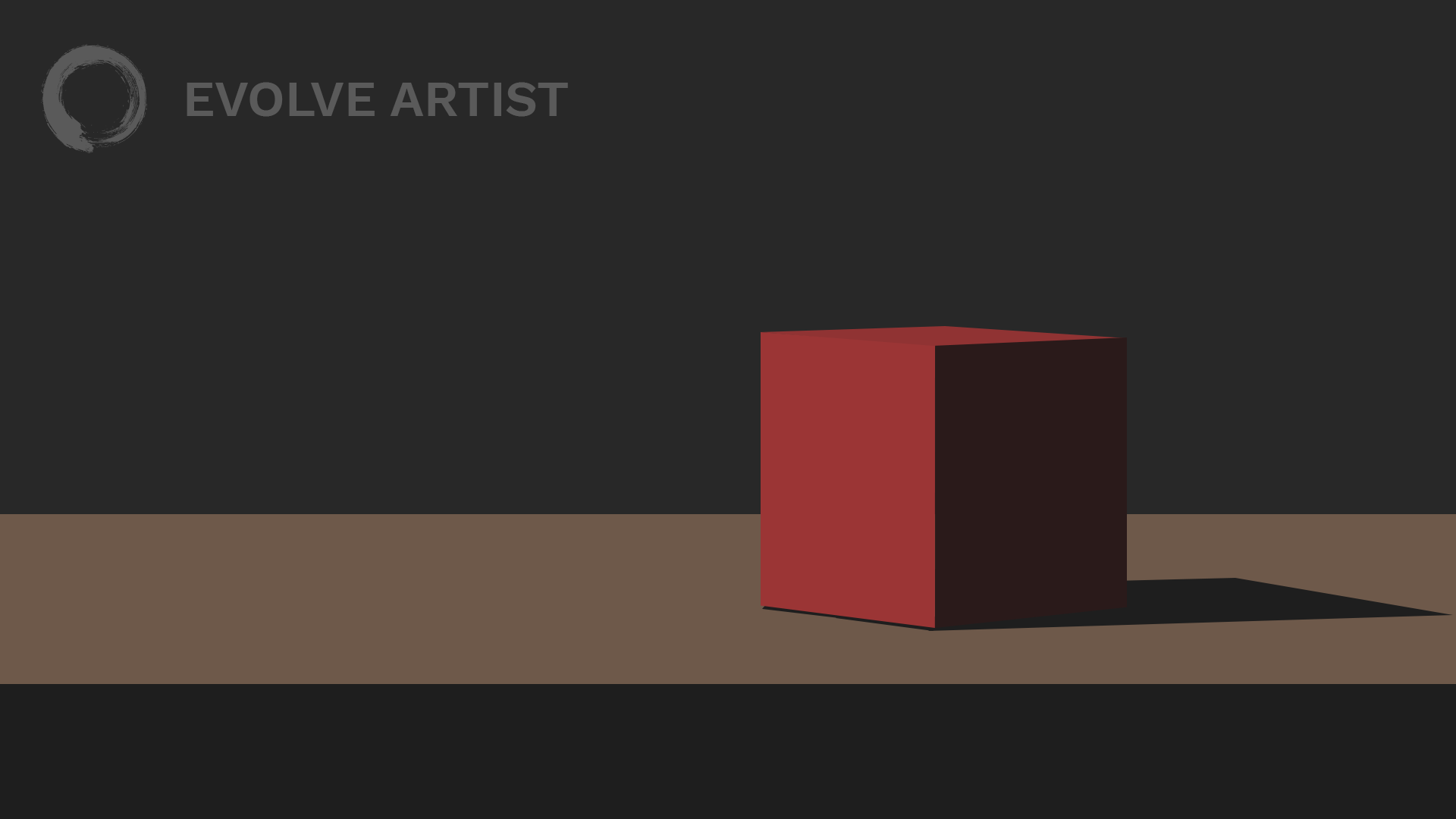
Structure is more important than the details in this image of a simple cube made of one light shade and one shadow shade.
A simple cube has one shadow and two light shades, one on the side and one on the top. A face could be broken down into one shadow shade and one light shade.
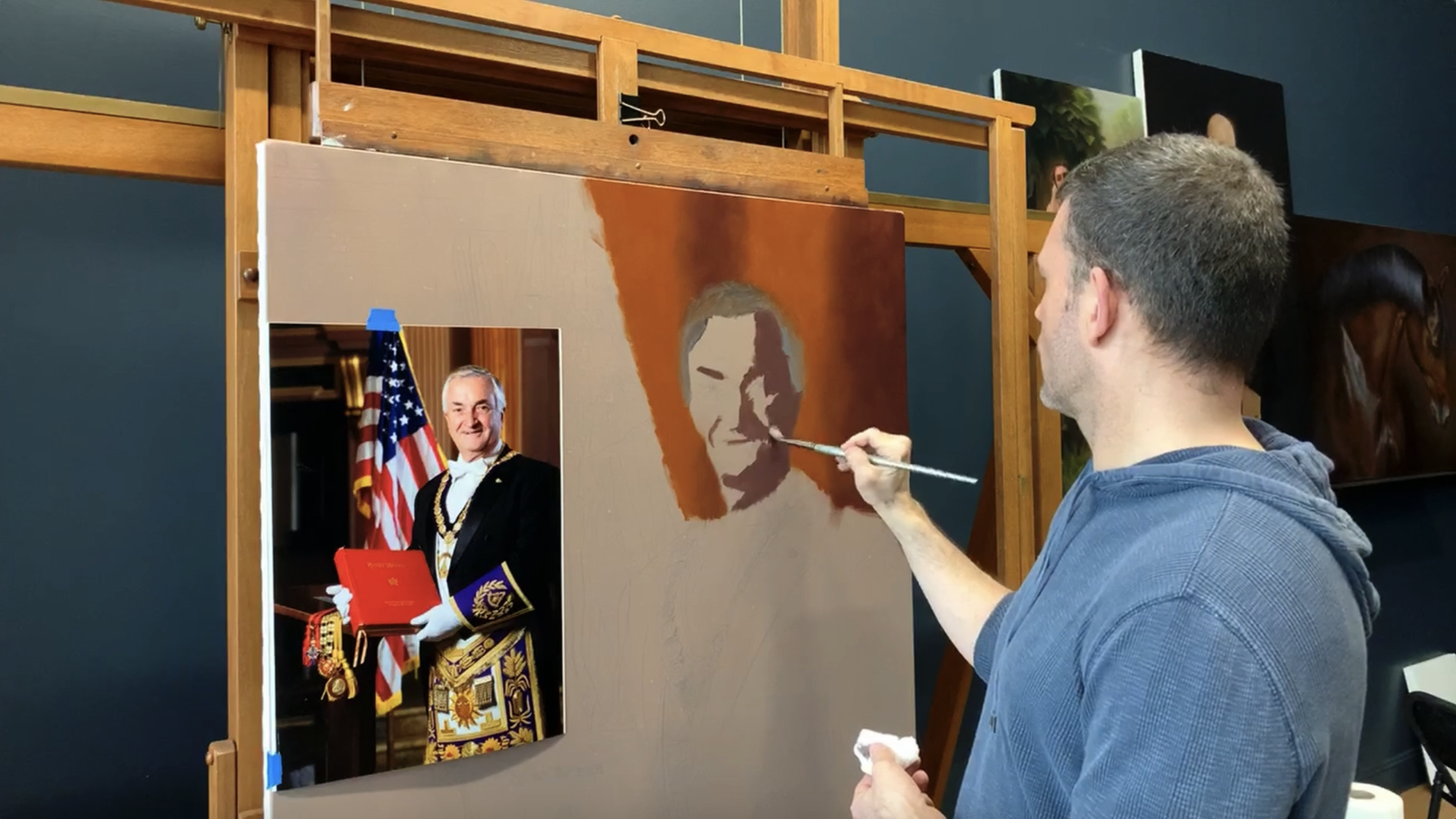
At the start of his portrait painting, Evolve Founder Kevin Murphy begins with one shadow shade and one light shade.
What Really Matters When You Simplify Portrait Painting
Now we'll start and we'll think in terms of grayscale.
To show you how powerful just the two shades and some gradients and sharp edges are, I want you to think about your high school yearbook. For some of you, your high school yearbook is in black and white.
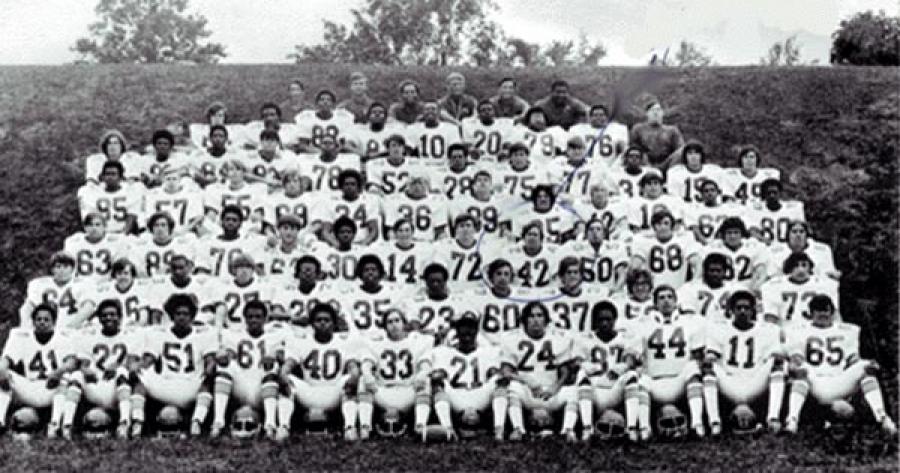
Team Titans, photo from 1972 TC Williams Yearbook. The small and blurry faces from high school yearbooks are still recognizable despite their lack of detail.
For me, my high school yearbook is maybe 32 years old. I can look back in my high school yearbook and look at my football team. And the heads are small. They're made up of maybe 12 pixels in grayscale. Yet, I'm able to recognize people.
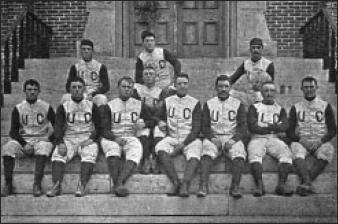
A photo of Colorado's first football team, 1890. The structure of the players' heads make their identities recognizable.
From 35 years ago, from an image where I can't see their eyes, I can't see their nose, and I can't see their mouth, I can see the overall structure of the head. And not even under good lighting. However, the structure of the head is enough for me to recognize somebody from 35 years ago.
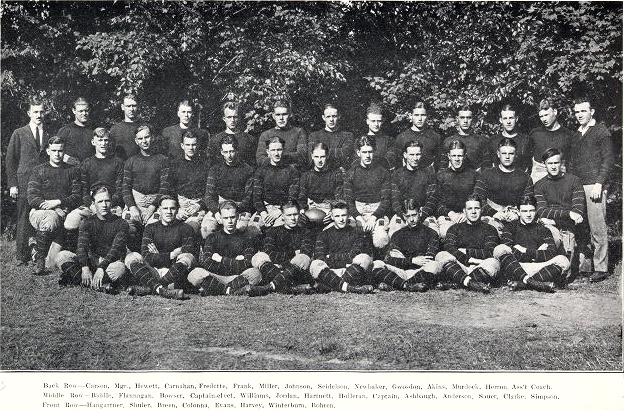
1922 Pittsburgh Panthers football team. From the 1924 Owl Year Book published by the University of Pittsburgh. Old team photographs show you what matters most when simplifying painted portraits.
If you go and you check out your yearbooks and look at the team photographs, they're terrible, out of focus, and taken from 25 feet away. The heads are little but you'll still recognize people.
That shows you what matters in creating a recognizable portrait--a portrait that looks like the person. It also shows you what matters when you simplify portrait painting.
What Doesn’t Matter When You Simplify Portrait Painting
Those photographs don't require any details for you to recognize the person.
When we paint a portrait, it’s not the details that matter. It’s the bone structure in the head that makes the person look the way they look. The eyes, the nose, and the mouth, they’re decorative.
KEVIN MURPHY
Evolve Artist, Founder
So when we paint a portrait, even on a large scale, it's not the eyes and the nose and the mouth that matter. It's not the details. It's not razor stubble. It's not individual hairs.
It's the bone structure in the head that makes the person look the way they look. The eyes, the nose, and the mouth, they're decorative. They're like earrings. They really are decorative.
Simplicity from Impressionists
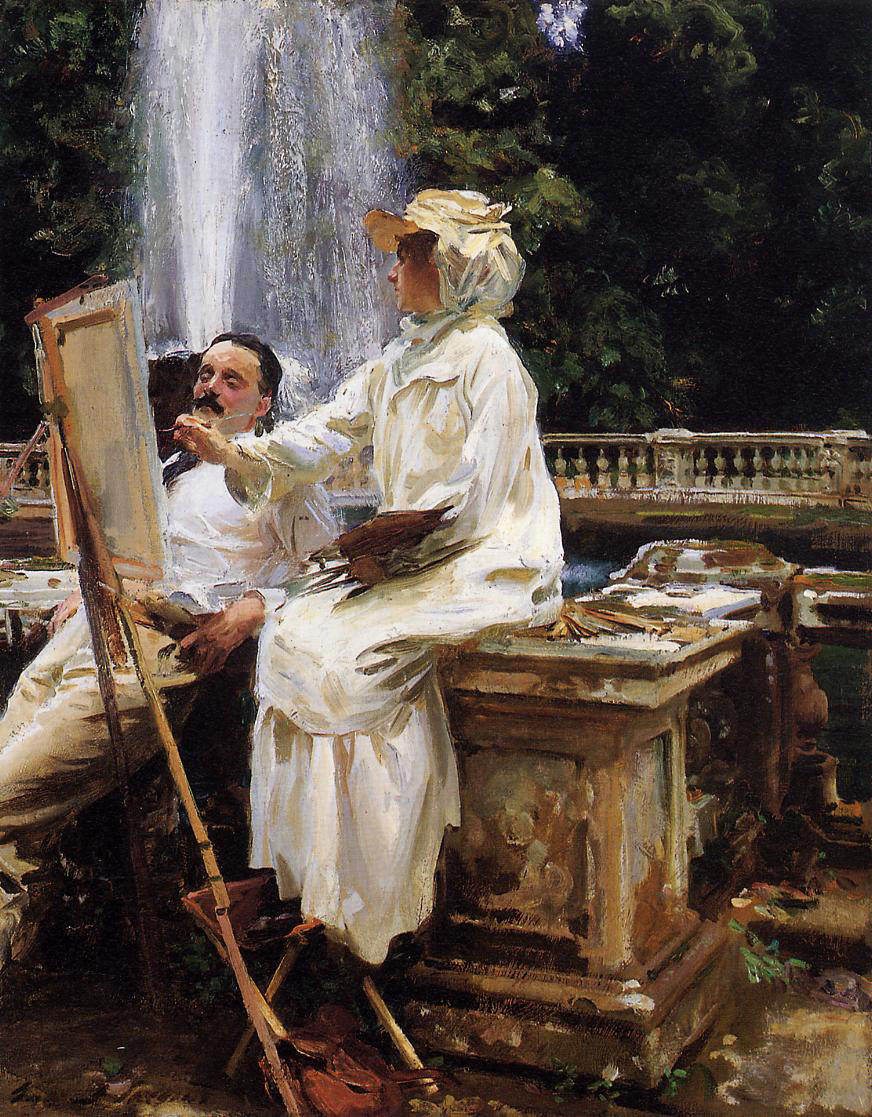
In The Fountain, Villa Torlonia, Frascati, Italy, John Singer Sargent simplifies his portraits by focusing on the structure of the head and not the details.
If you go and you look at John Singer Sargent, even portraits by guys like Zorn, you'll see that a lot of these paintings, particularly in the shadows, barely even hint at an eye or a nostril. They just leave it out completely.
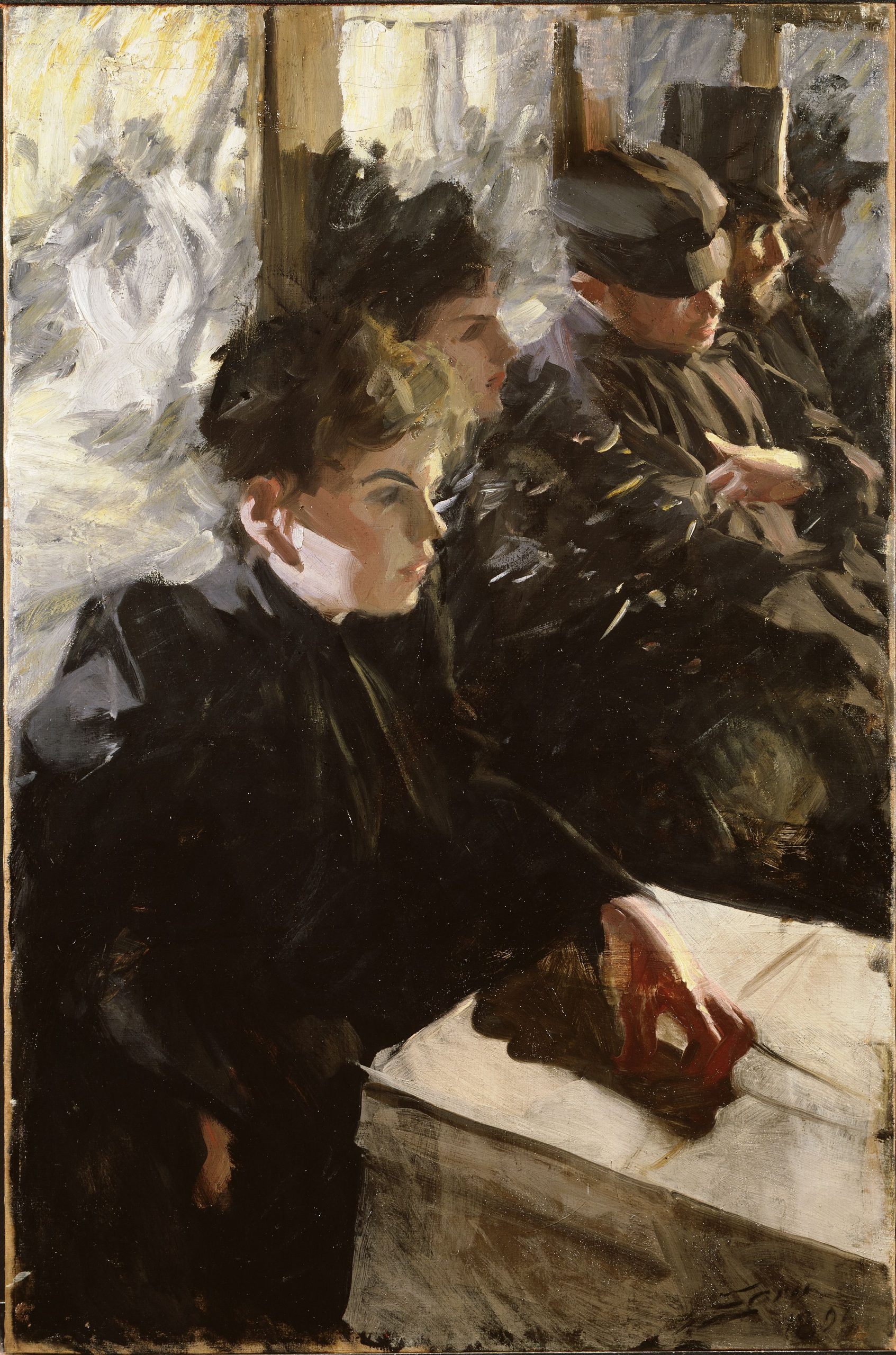
The vague facial features don't take away from this impressive portrait painting, Omnibus, by Anders Zorn.
When you simplify how you paint portraits, it doesn't matter because it doesn't actually have anything to do with the structure of the head. Your brain will fill in the blanks if the structure of the head is done well.

La fête foraine, Place Pigalle by Louis Abel-Truchet. Where the head structure is done well, your brain will fill in the details.
You can go look at impressionist work and look at paintings where they have people that are at a parade or something like that. You see them in the background and they're just like six strokes and it's a face.
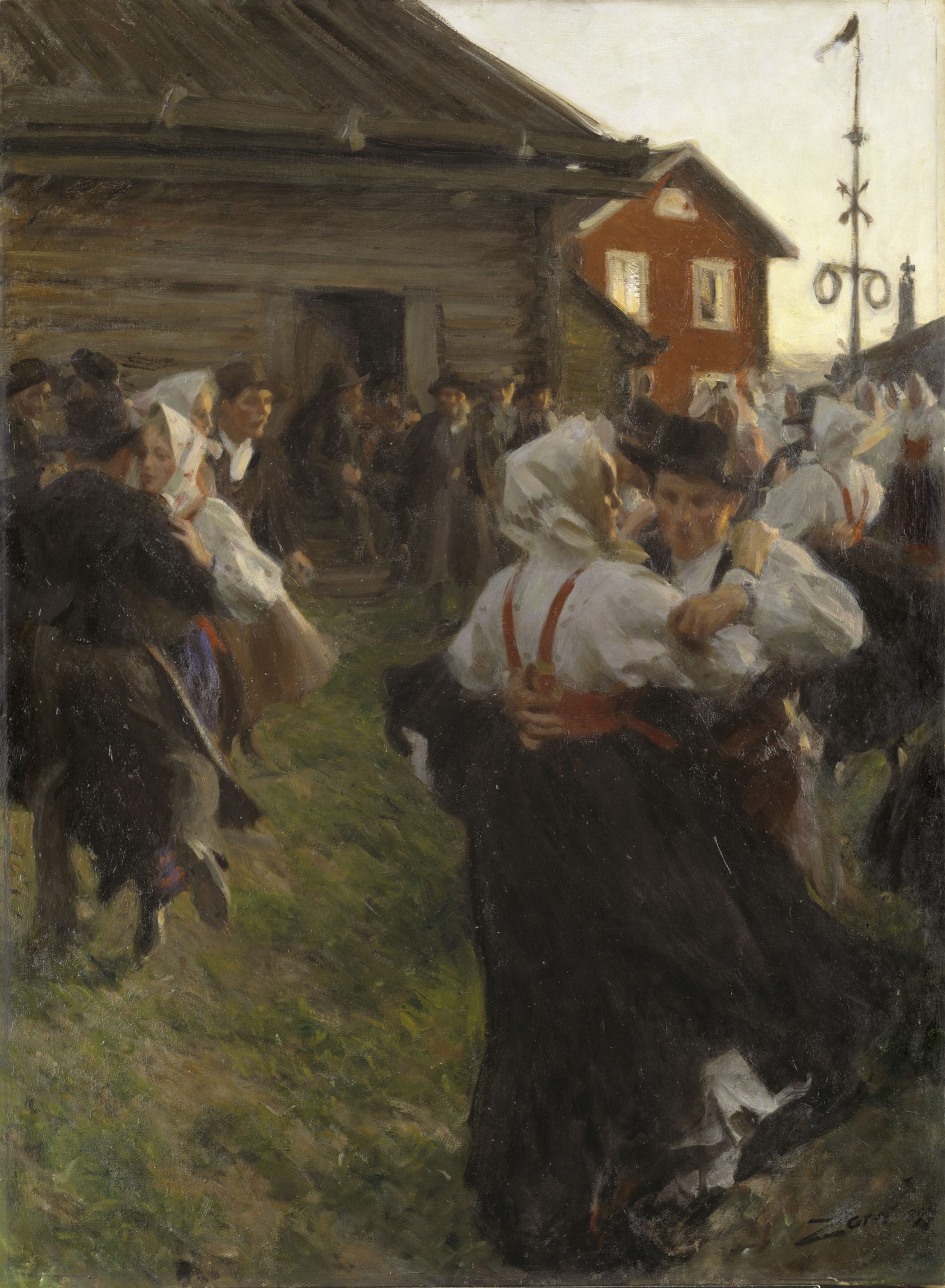
Anders Zorn's Midsummer Dance is a perfect example of how a person can be recognized in a crowd, even without depicting the details of their face.
And you know that if you walk that parade, you could actually find the person, using that little six-stroke face, and pull them out of the crowd because it's so crystal clear what they look like, even though there are no eyes or any details. That's really a beautiful thing. That's how you simplify portrait painting.
Starting With Structure
When all of the details go away, what’s left is what matters.
KEVIN MURPHY
Evolve Artist, Founder
When you're doing a portrait, you really want to start it (assuming you want to take it to a high polish and a clean, realistic finish with details) nice and loose. You want to start it as an impressionist painting and then build up the details on top of it.
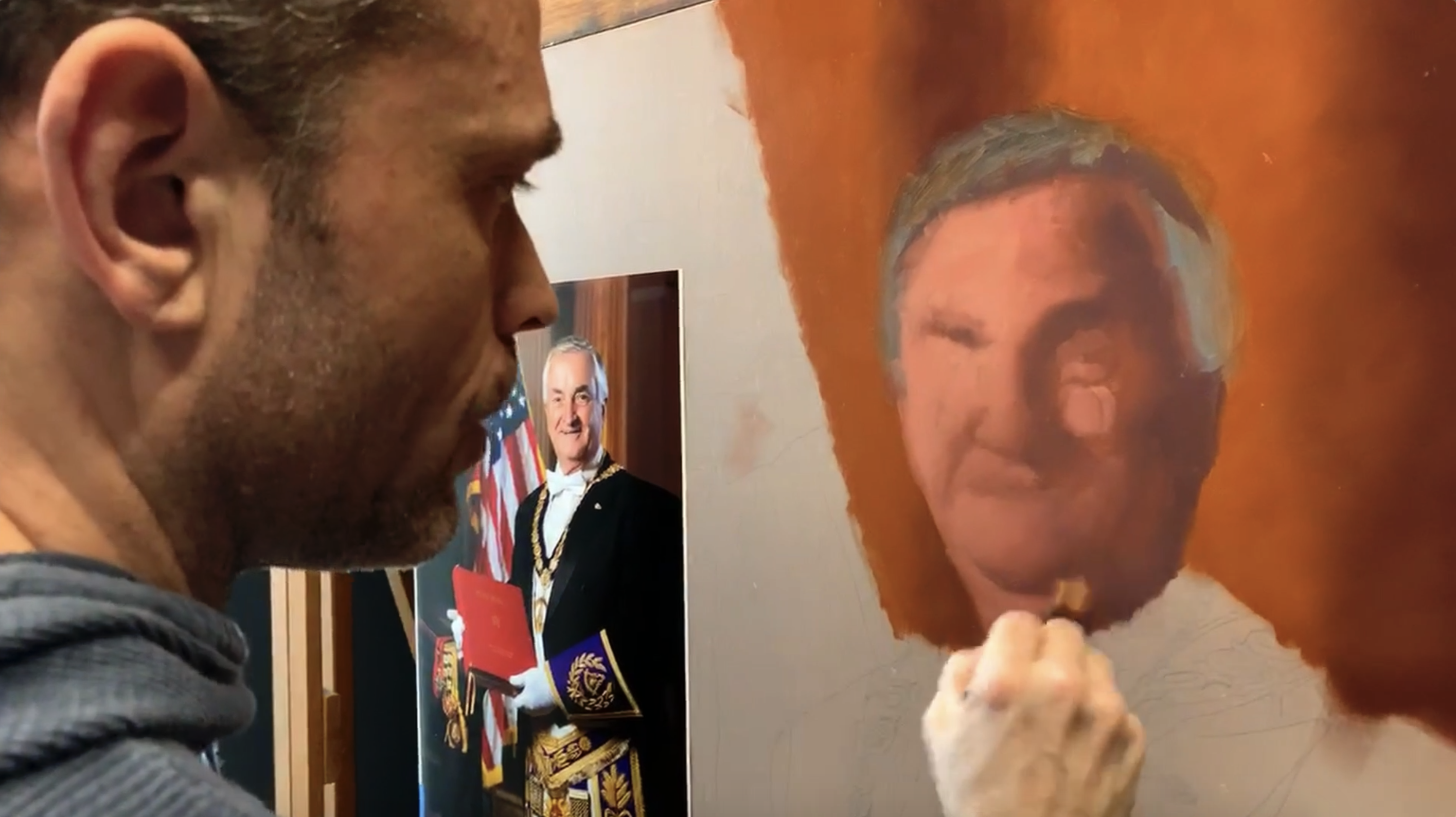
To simplify portrait painting, start it as an impressionist painting and then build details on top.
The structure has to be the underpinning for the painting. The structure is the basis to simplify portrait painting. Again, when you walk back 25 or 30 feet where all of the details go away, what's left is what matters.
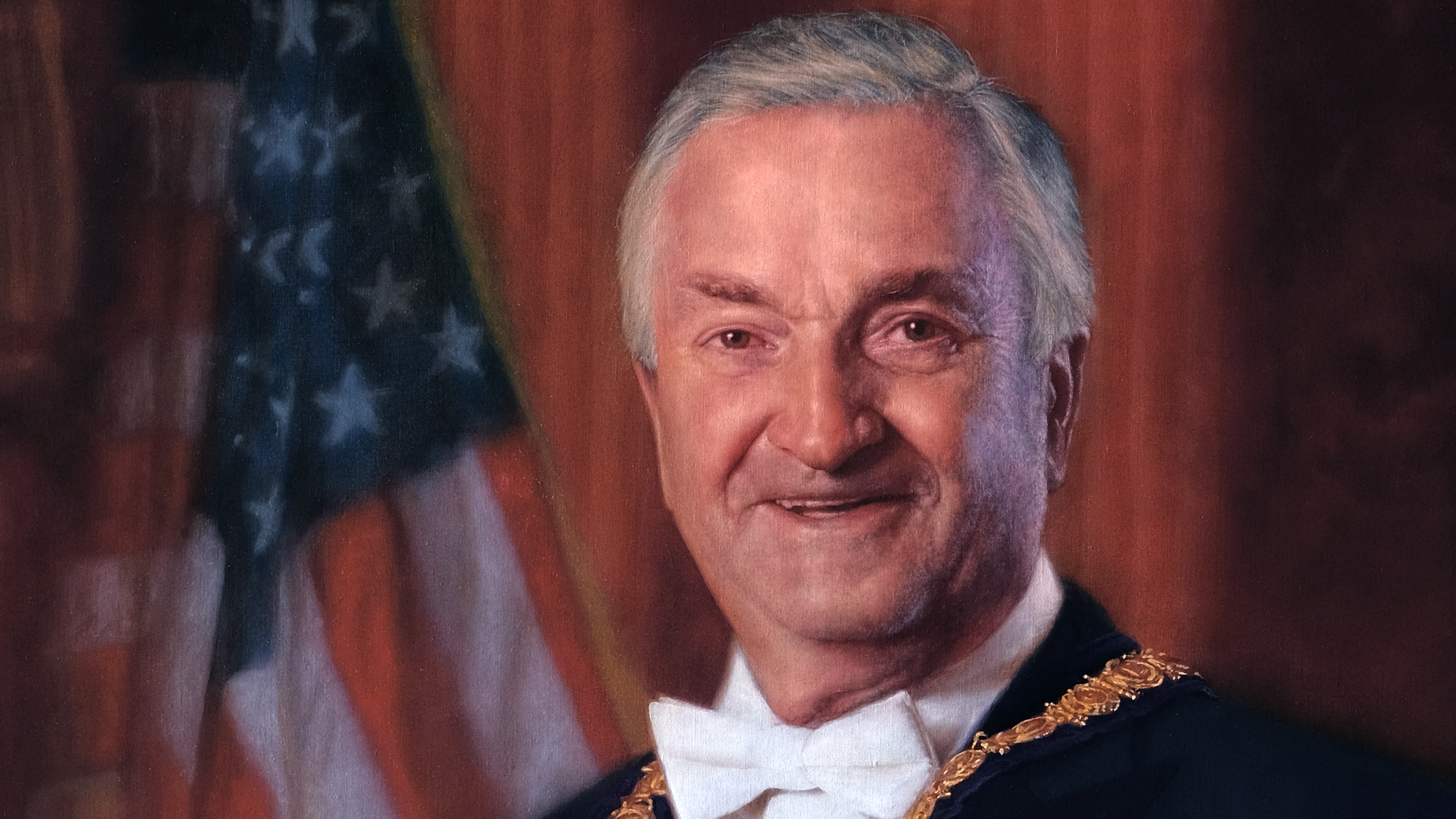
Capturing the simple structure of the head lays a strong foundation for a detailed portrait as seen in this portrait of Grand Master Sardone by Evolve Founder Kevin Murphy.
Conclusion
There's your master's guide on how to simplify portrait painting. This is the second post from our Master's Guide to Painting Better Portraits series. Subscribe to stay posted.
To read the other posts in the series click here:
Master's Guide #1: Where to Start a Portrait
Master's Guide #3: How to Build Confidence in Portrait Painting Master's Guide #4: How to Get a Likeness in Portrait Painting
Master's Guide #5: Quickest Method to Level Up Portrait Painting Skills
Master's Guide #6: How to Price Portrait Paintings
Master's Guide #7: How to Get Portrait Commissions
Master's Guide #8: Are Today's Portraitists Better Than the Old Masters?
If you found this post insightful and you want to get more content like this, then check us out on YouTube and follow us on Instagram.
Happy painting!
